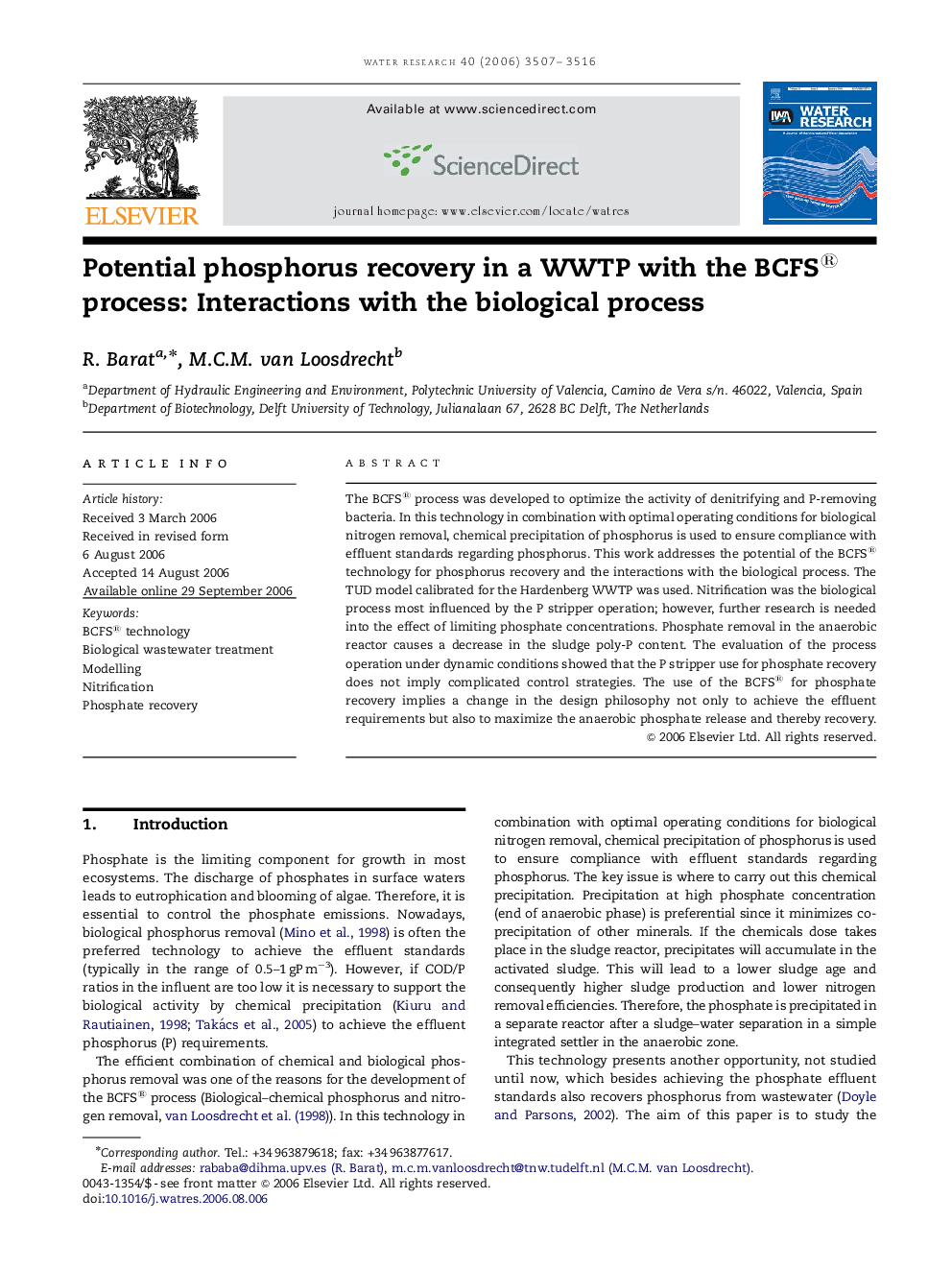| Article ID | Journal | Published Year | Pages | File Type |
|---|---|---|---|---|
| 4484523 | Water Research | 2006 | 10 Pages |
The BCFS® process was developed to optimize the activity of denitrifying and P-removing bacteria. In this technology in combination with optimal operating conditions for biological nitrogen removal, chemical precipitation of phosphorus is used to ensure compliance with effluent standards regarding phosphorus. This work addresses the potential of the BCFS® technology for phosphorus recovery and the interactions with the biological process. The TUD model calibrated for the Hardenberg WWTP was used. Nitrification was the biological process most influenced by the P stripper operation; however, further research is needed into the effect of limiting phosphate concentrations. Phosphate removal in the anaerobic reactor causes a decrease in the sludge poly-P content. The evaluation of the process operation under dynamic conditions showed that the P stripper use for phosphate recovery does not imply complicated control strategies. The use of the BCFS® for phosphate recovery implies a change in the design philosophy not only to achieve the effluent requirements but also to maximize the anaerobic phosphate release and thereby recovery.
